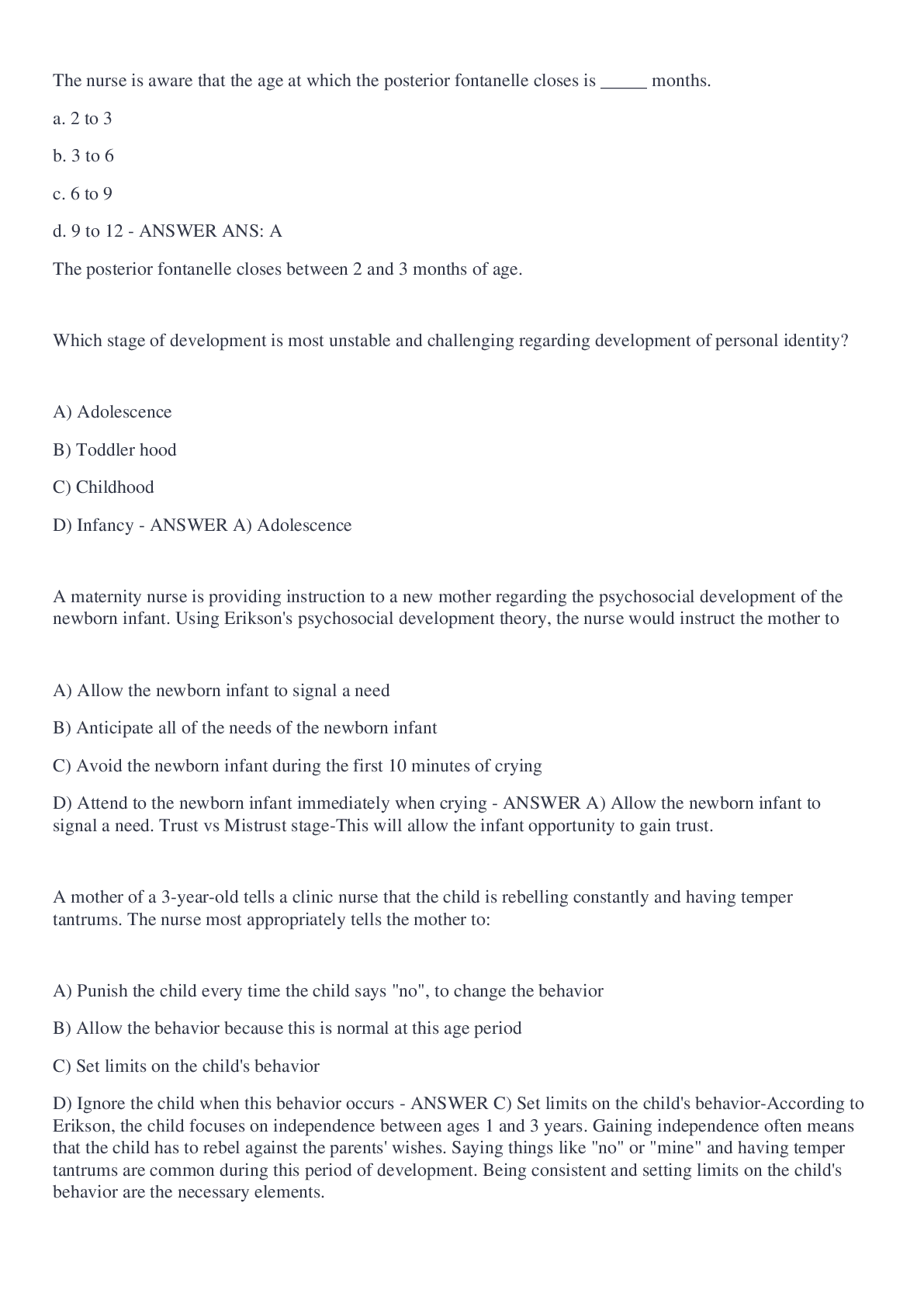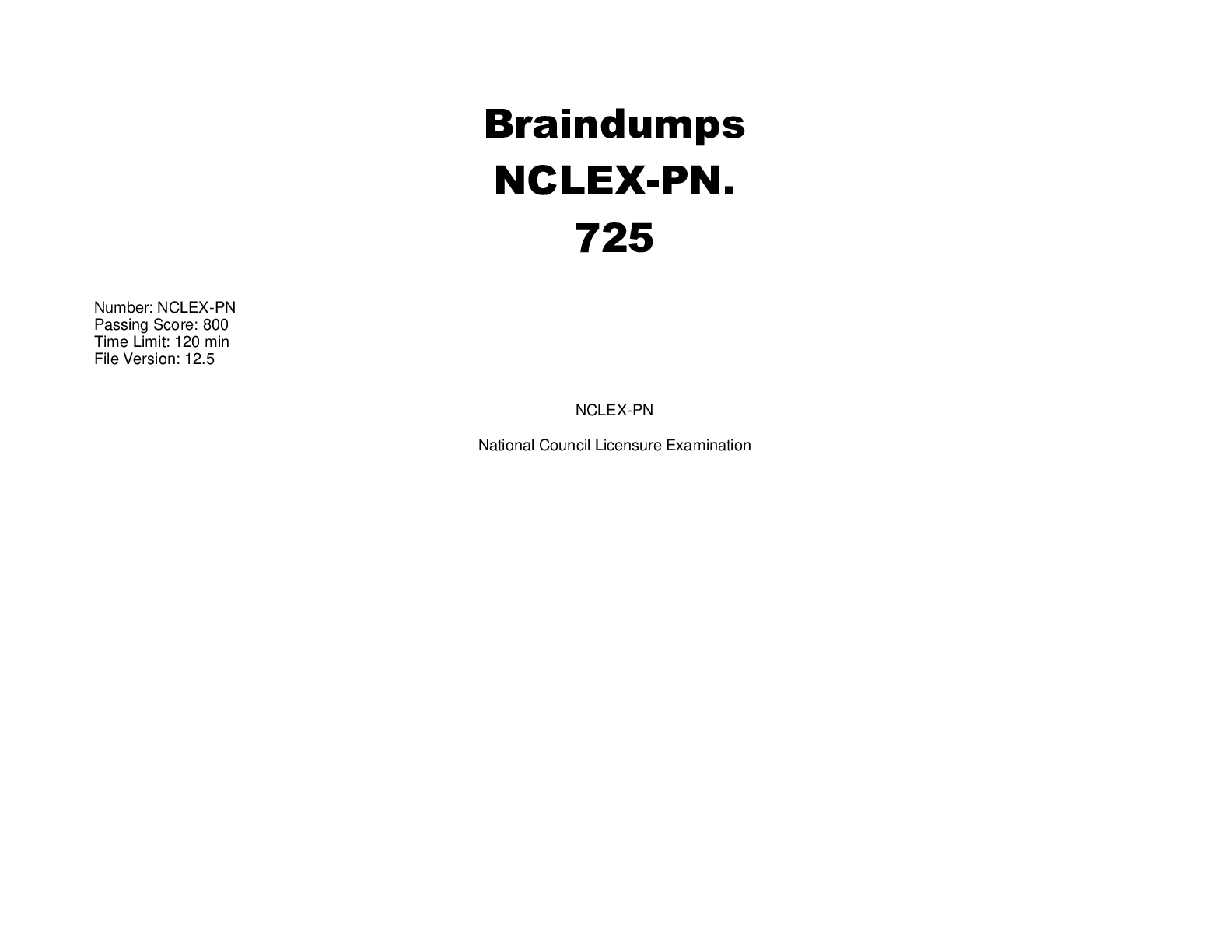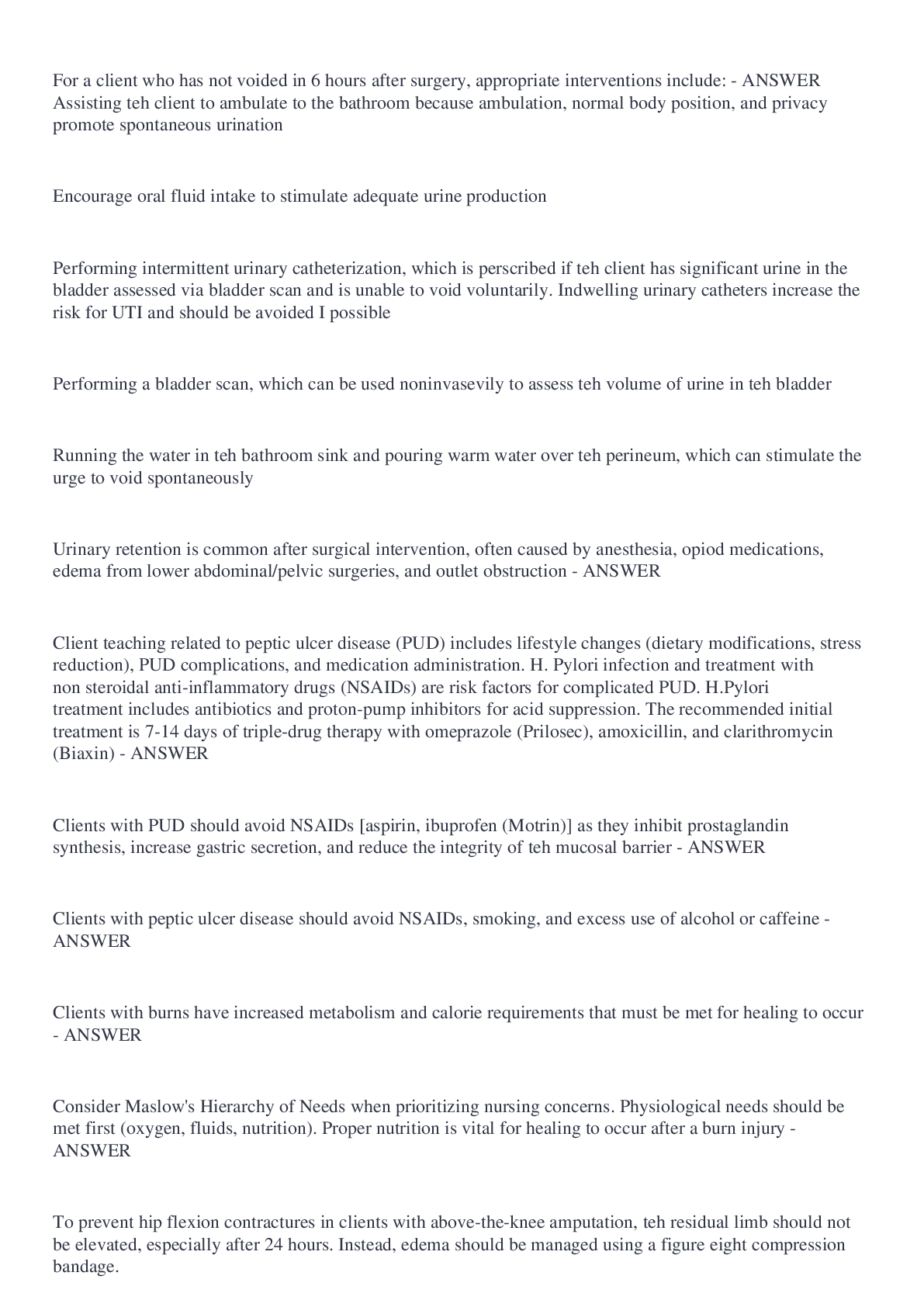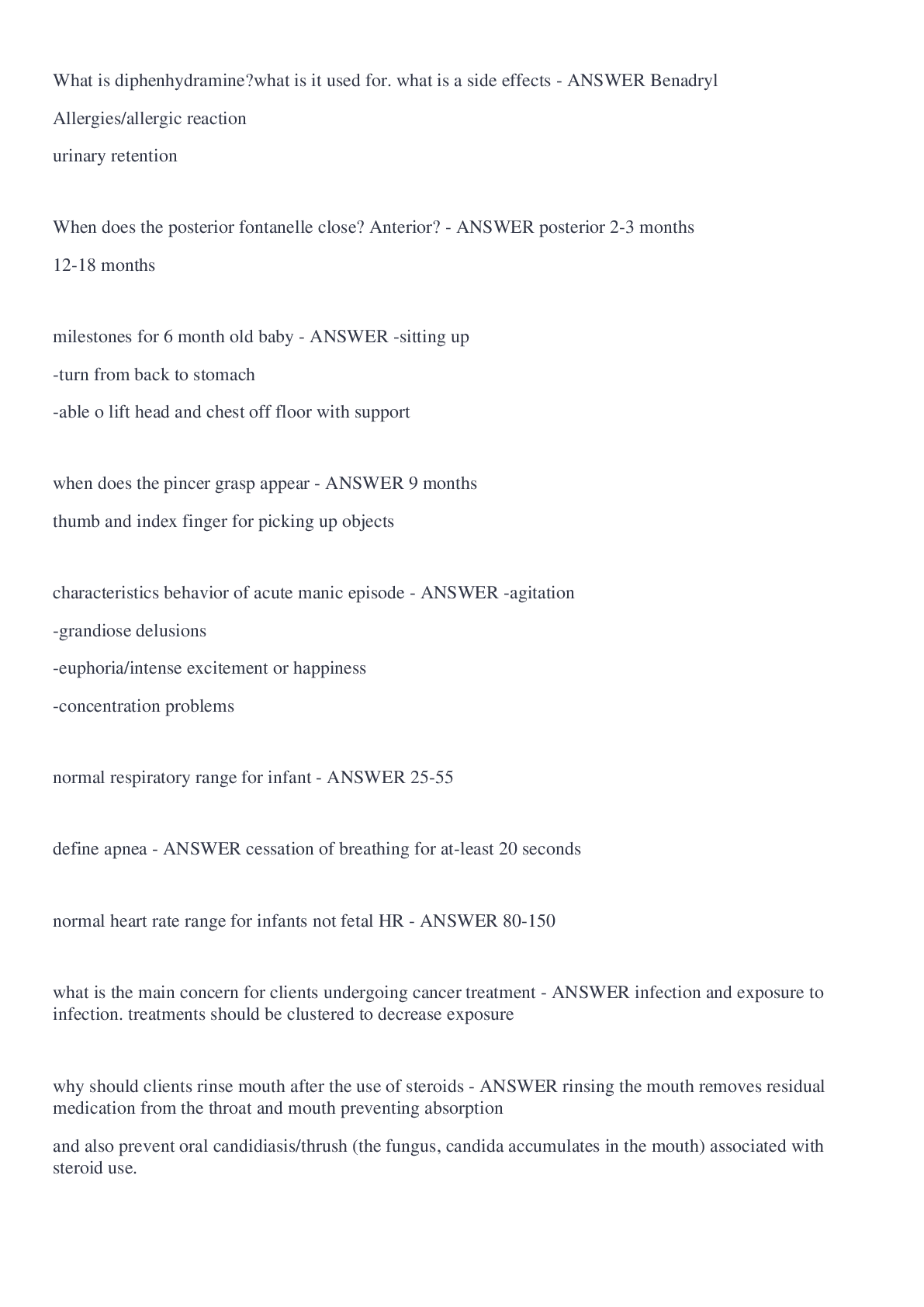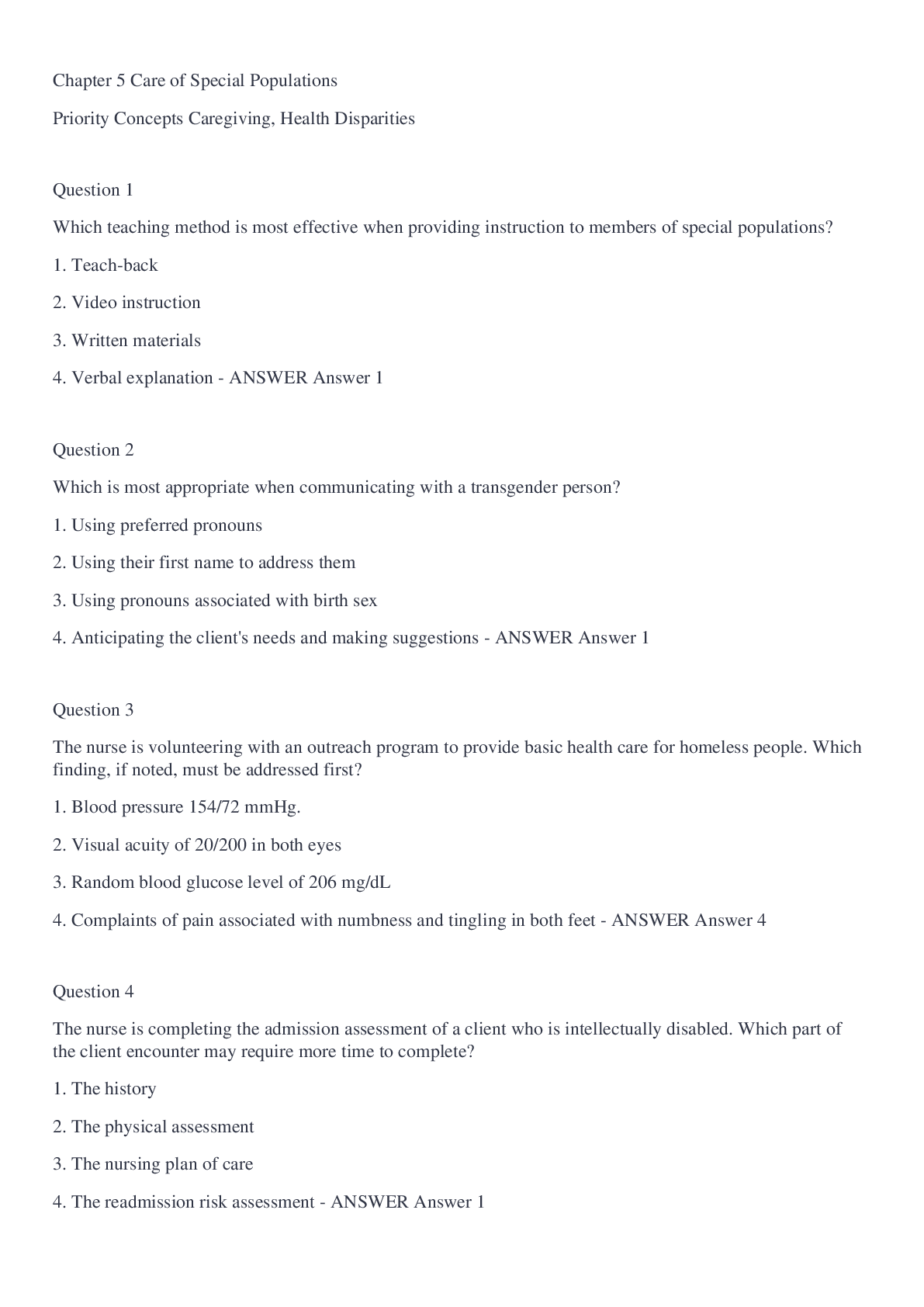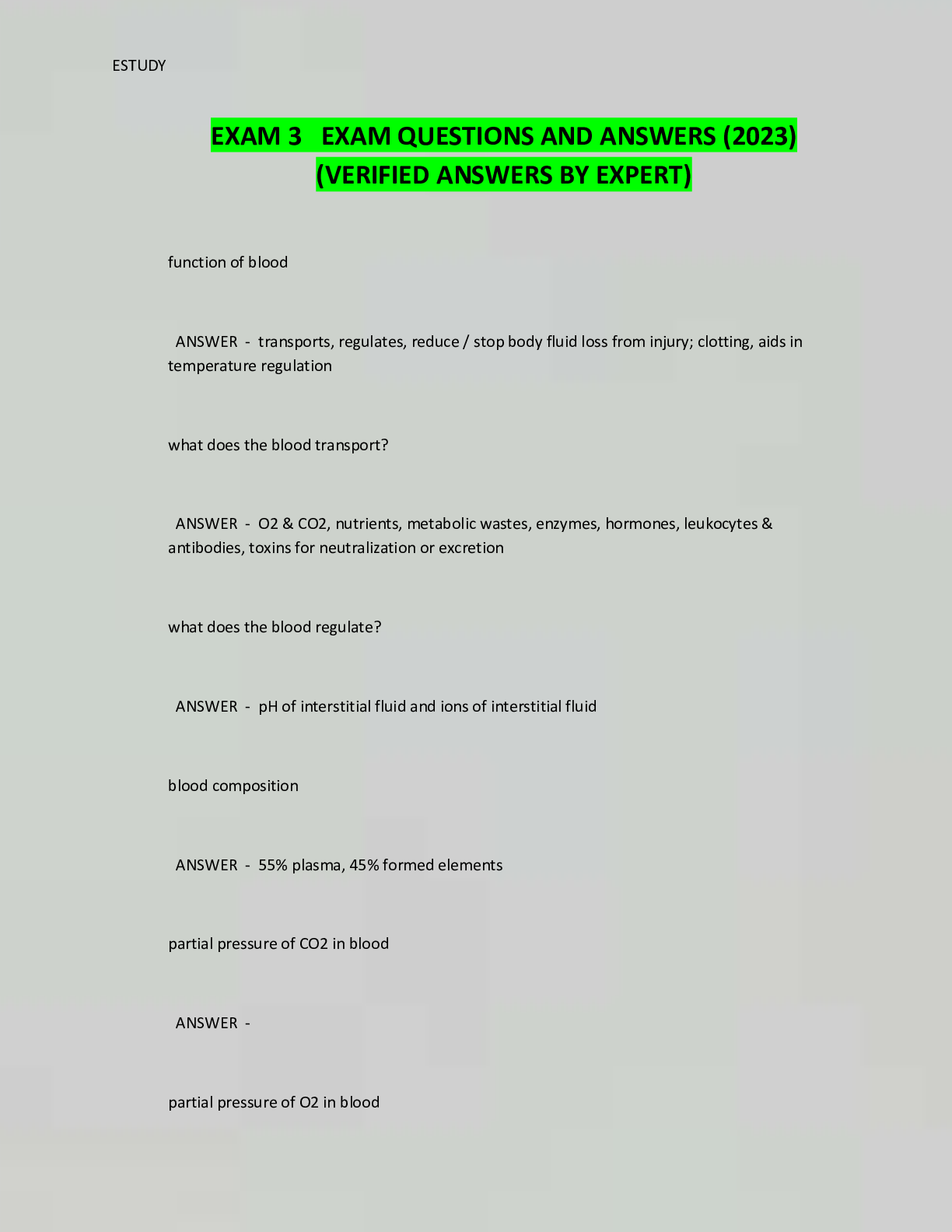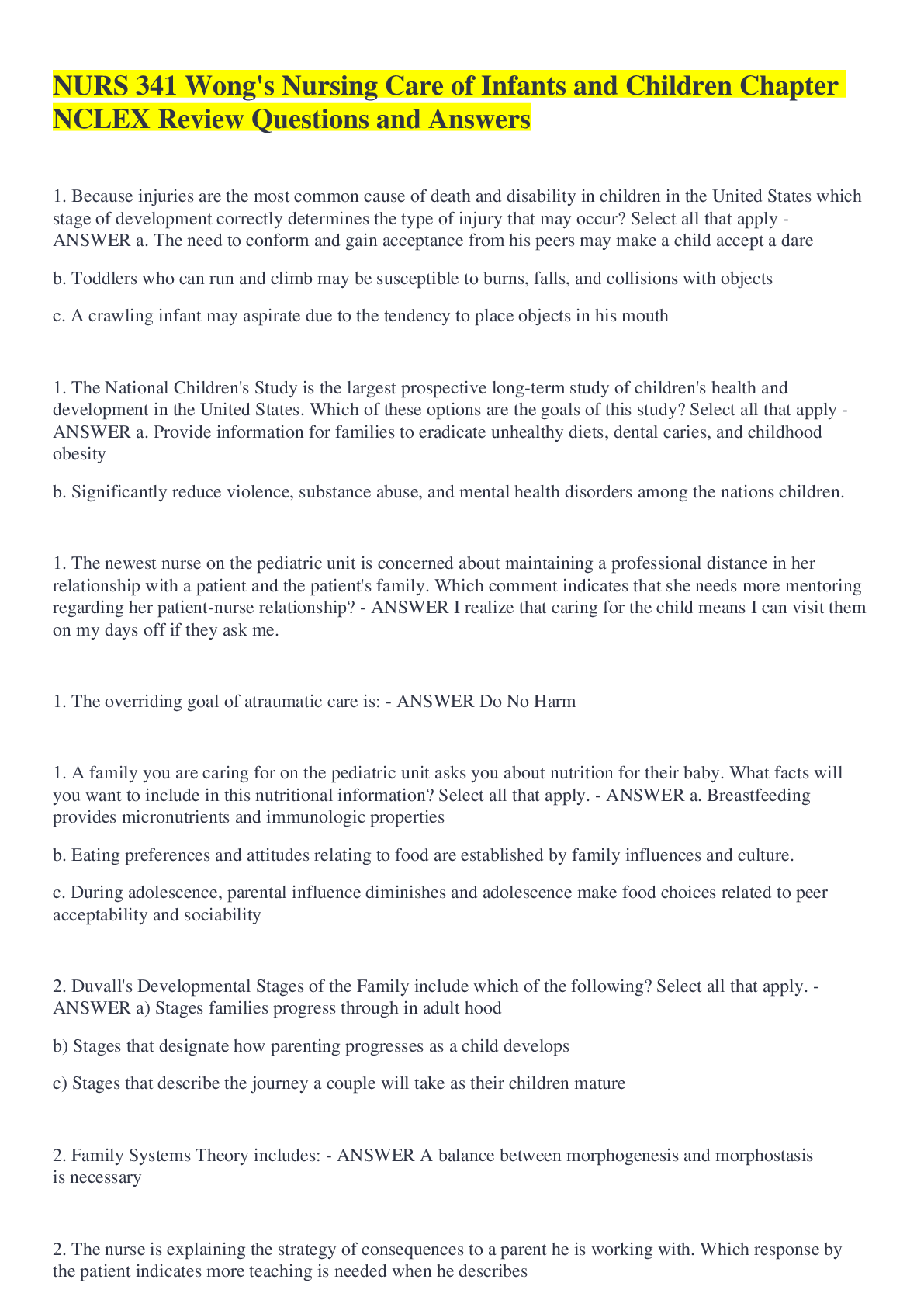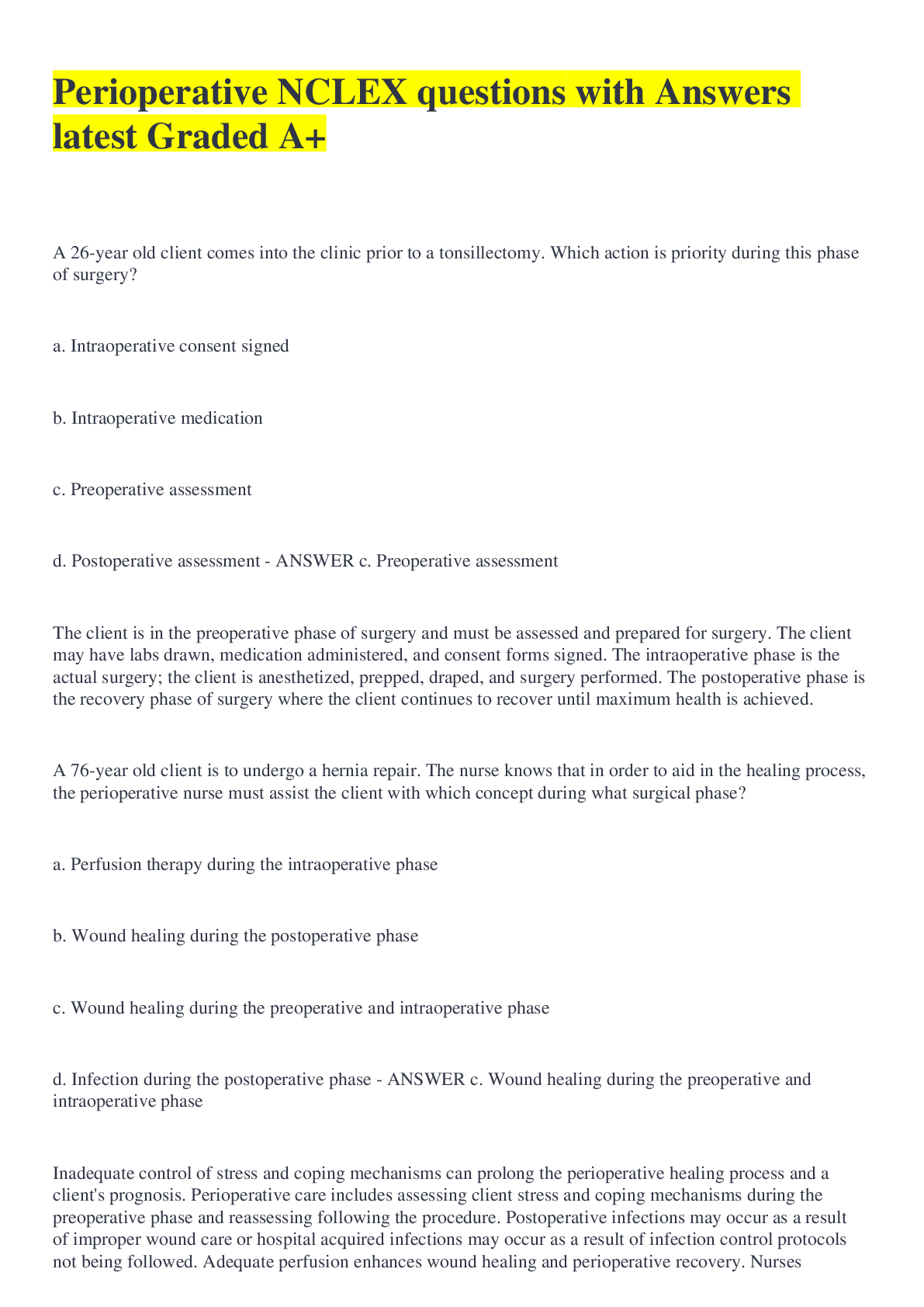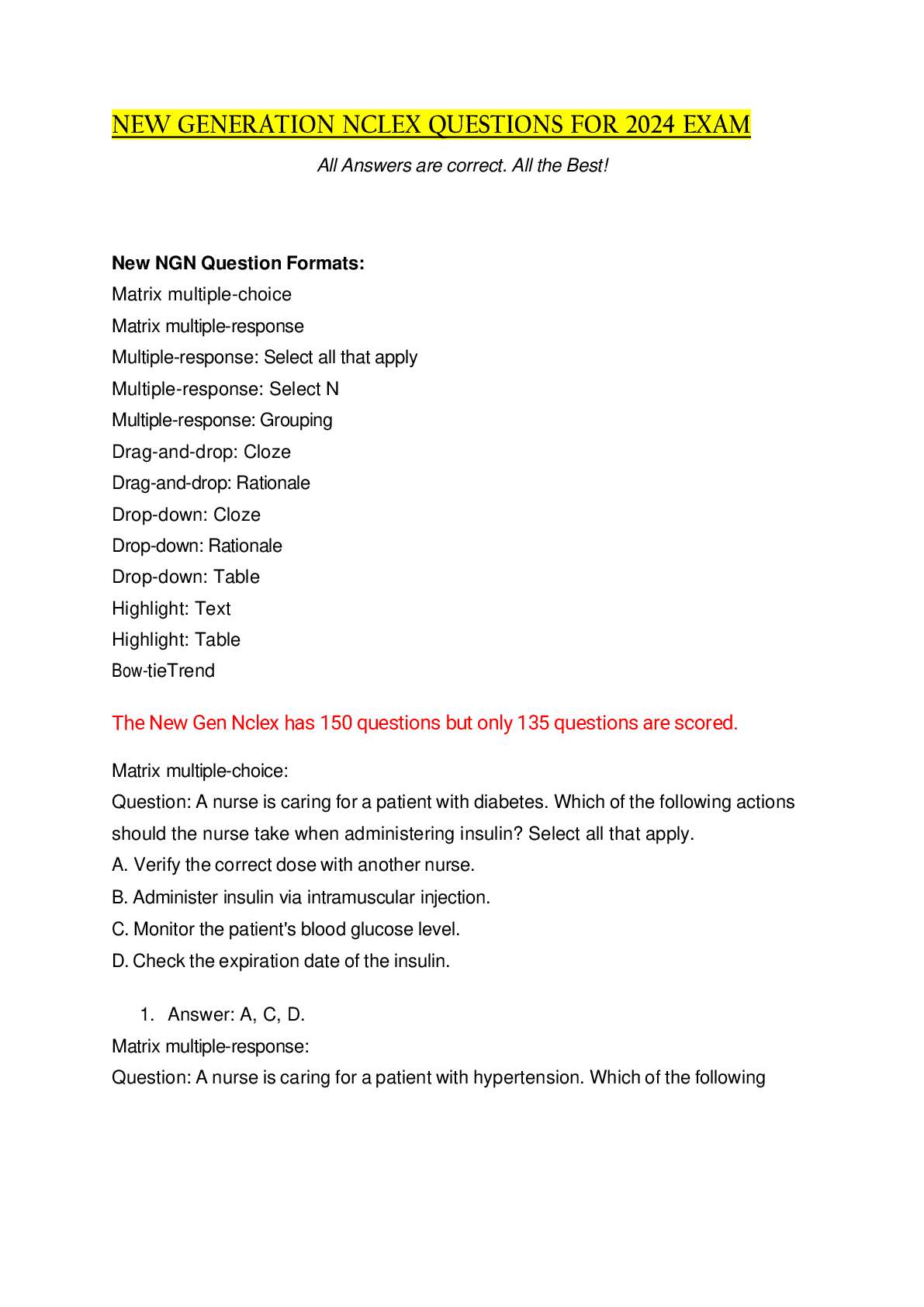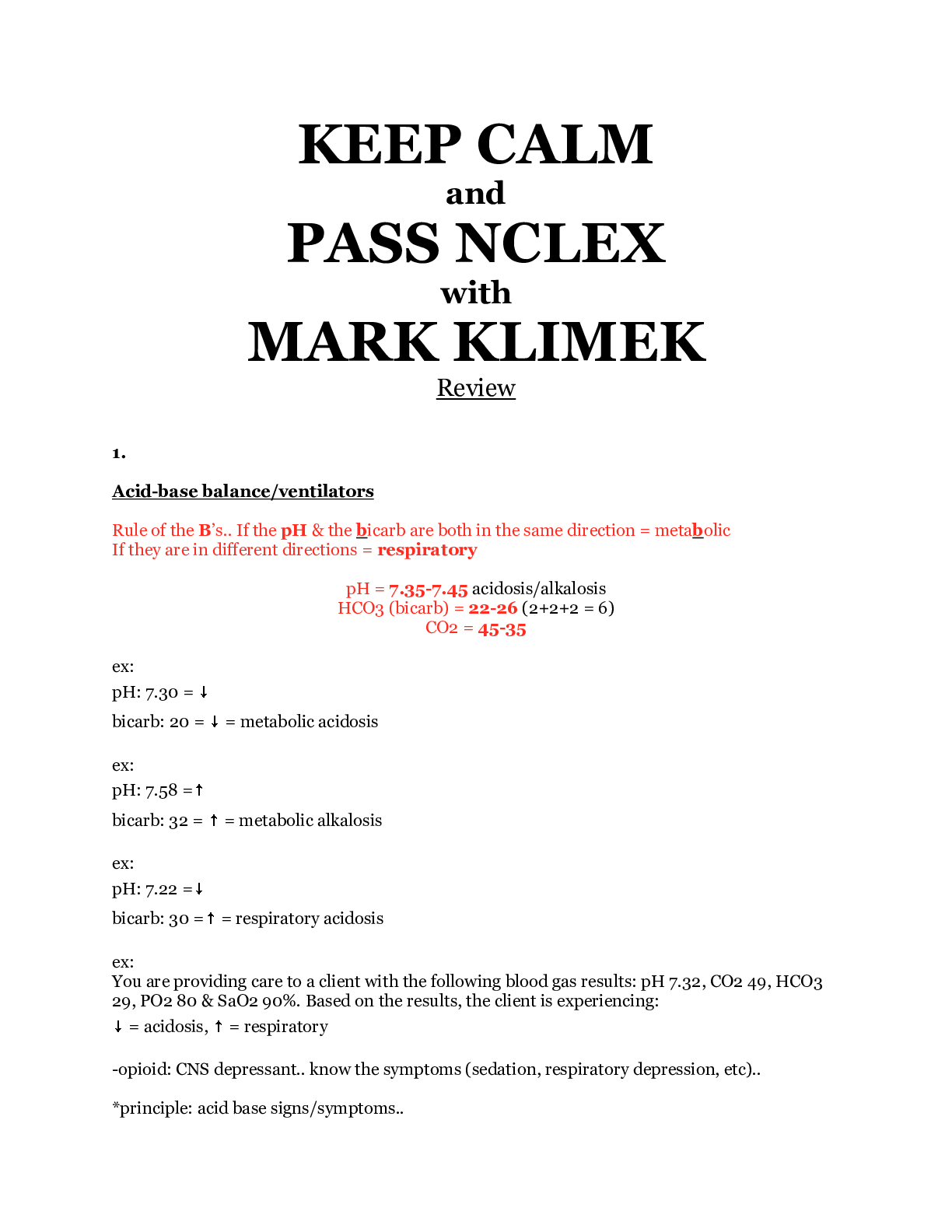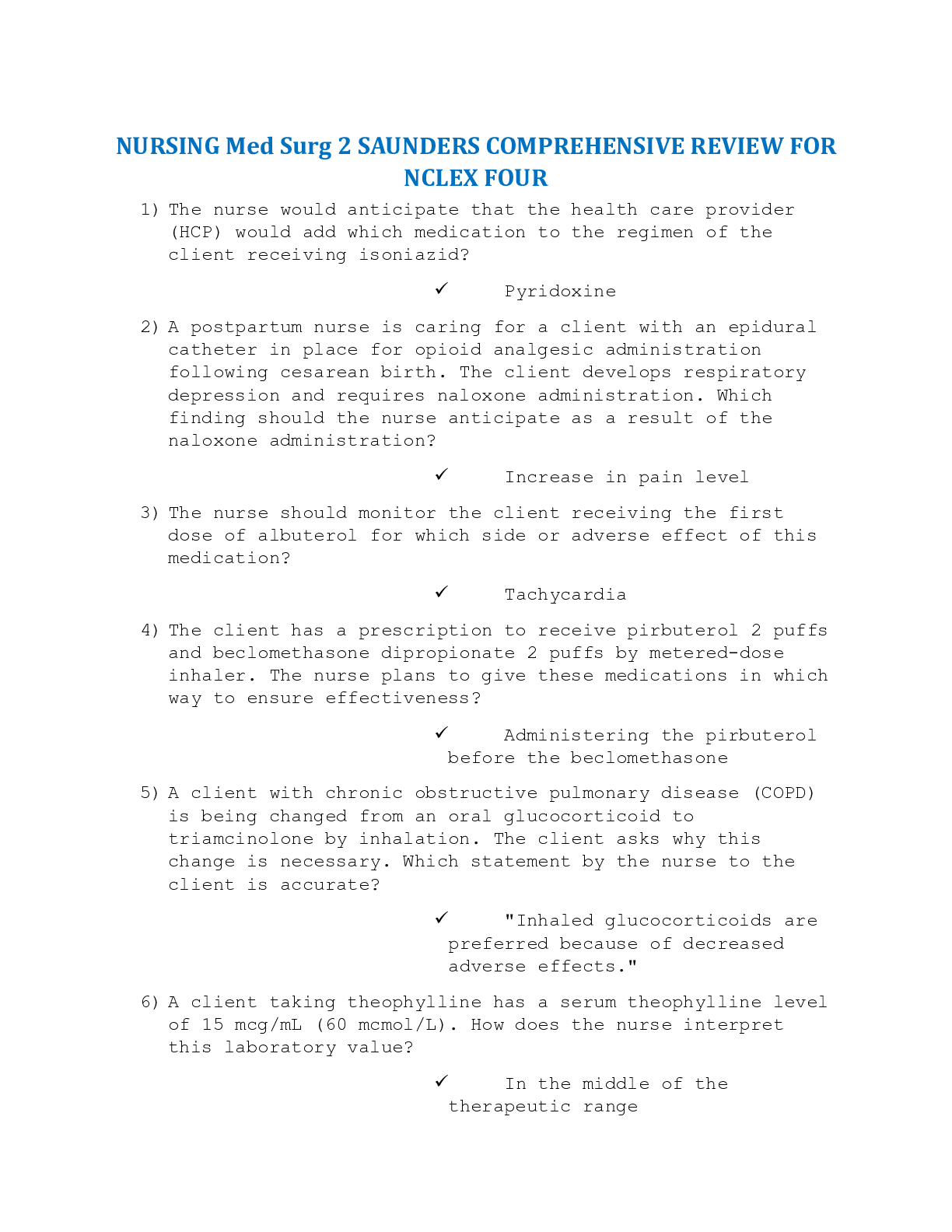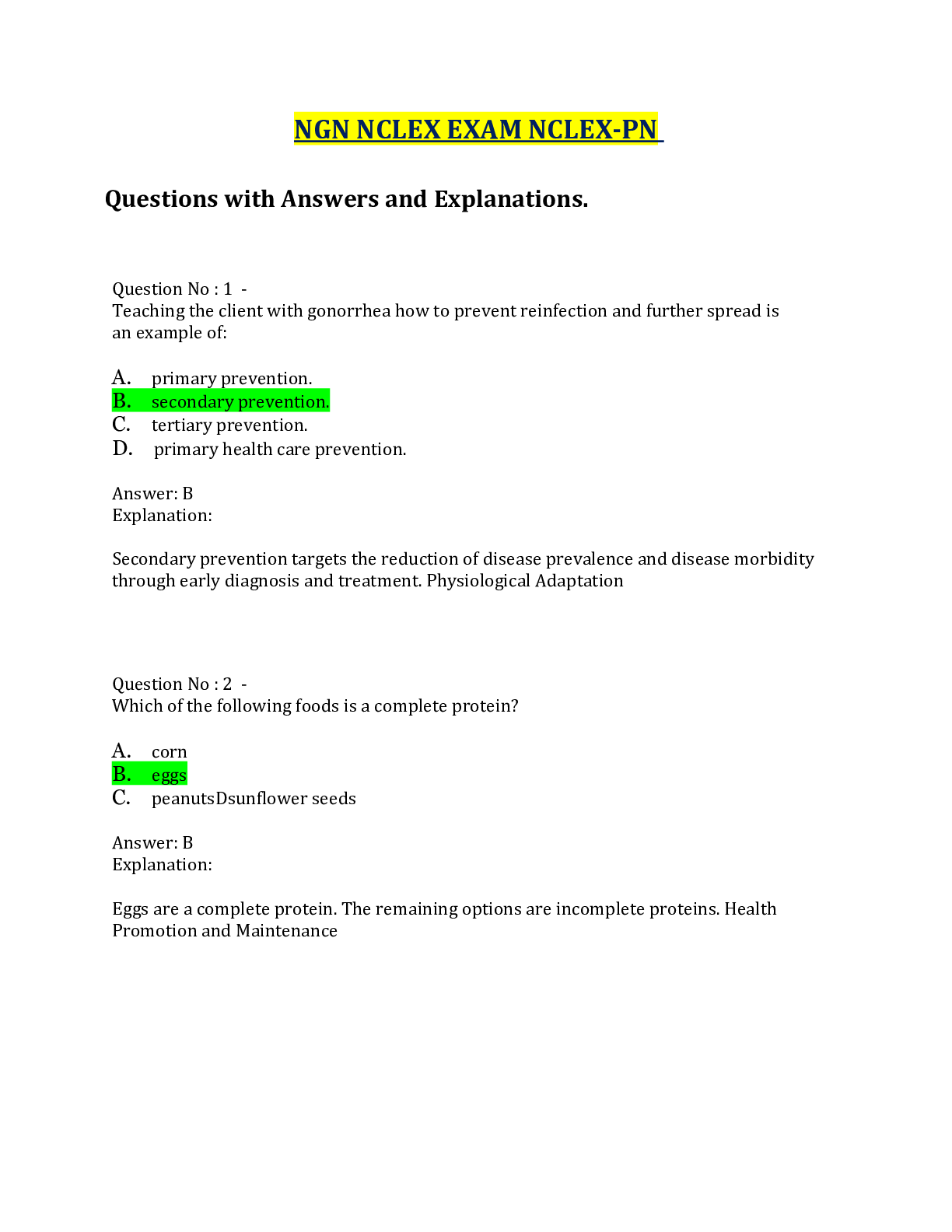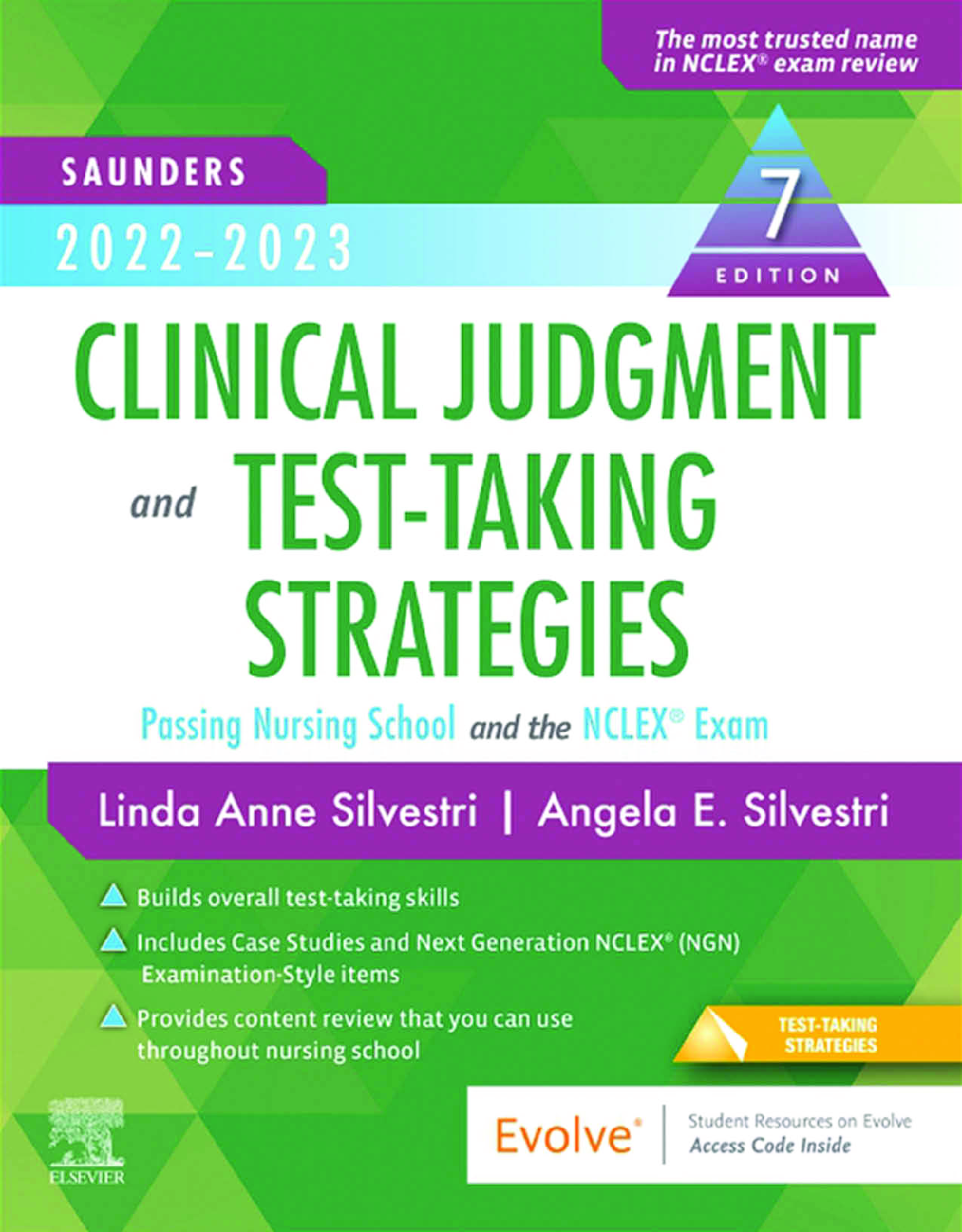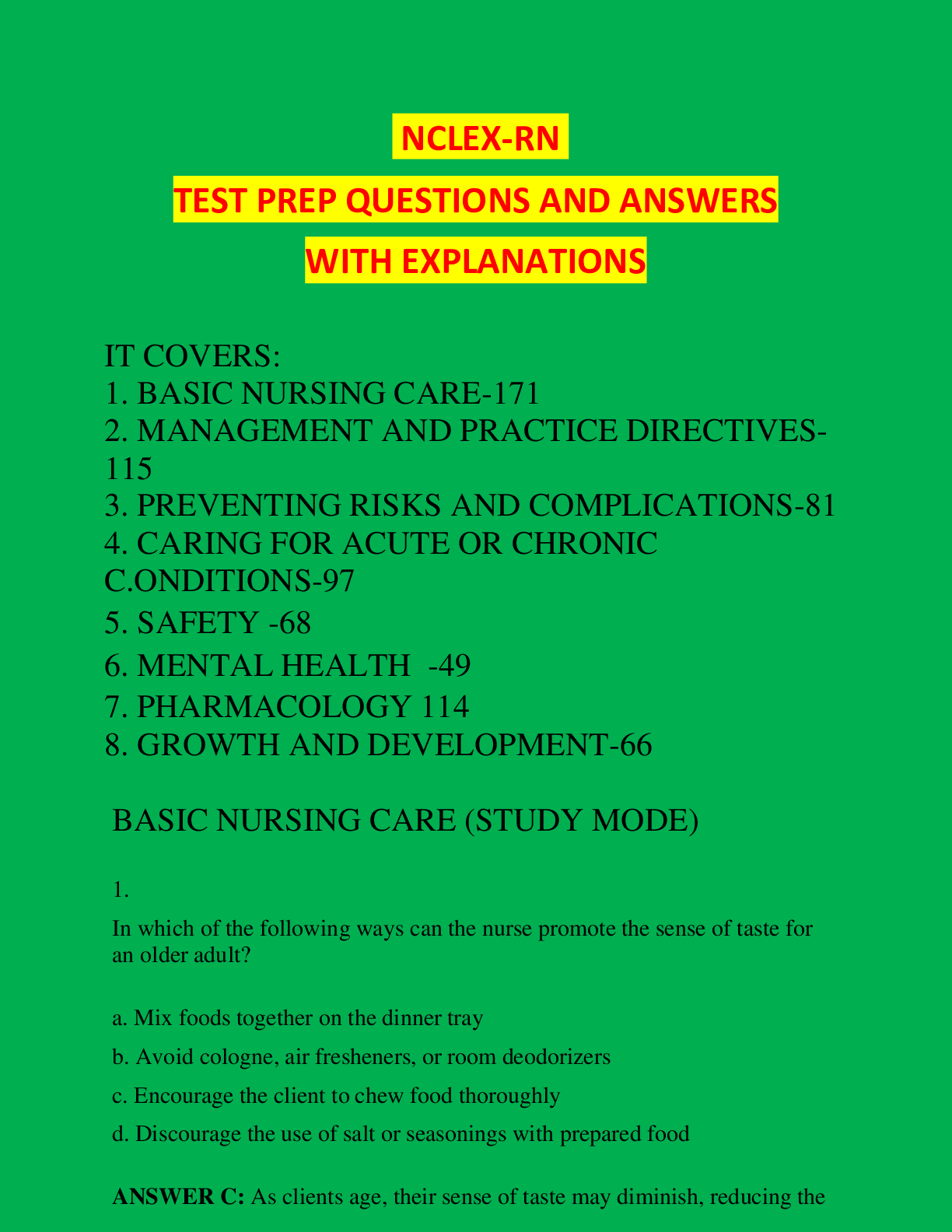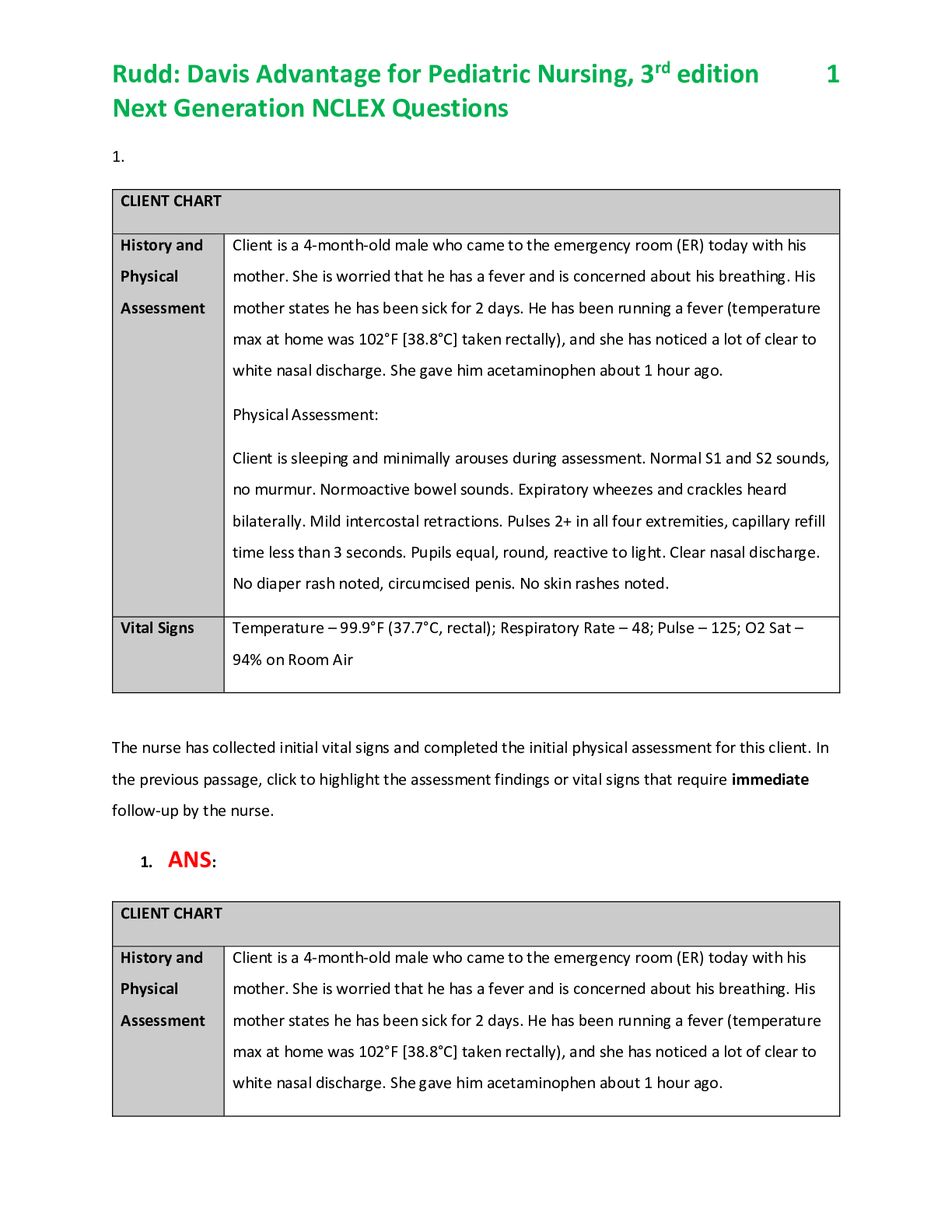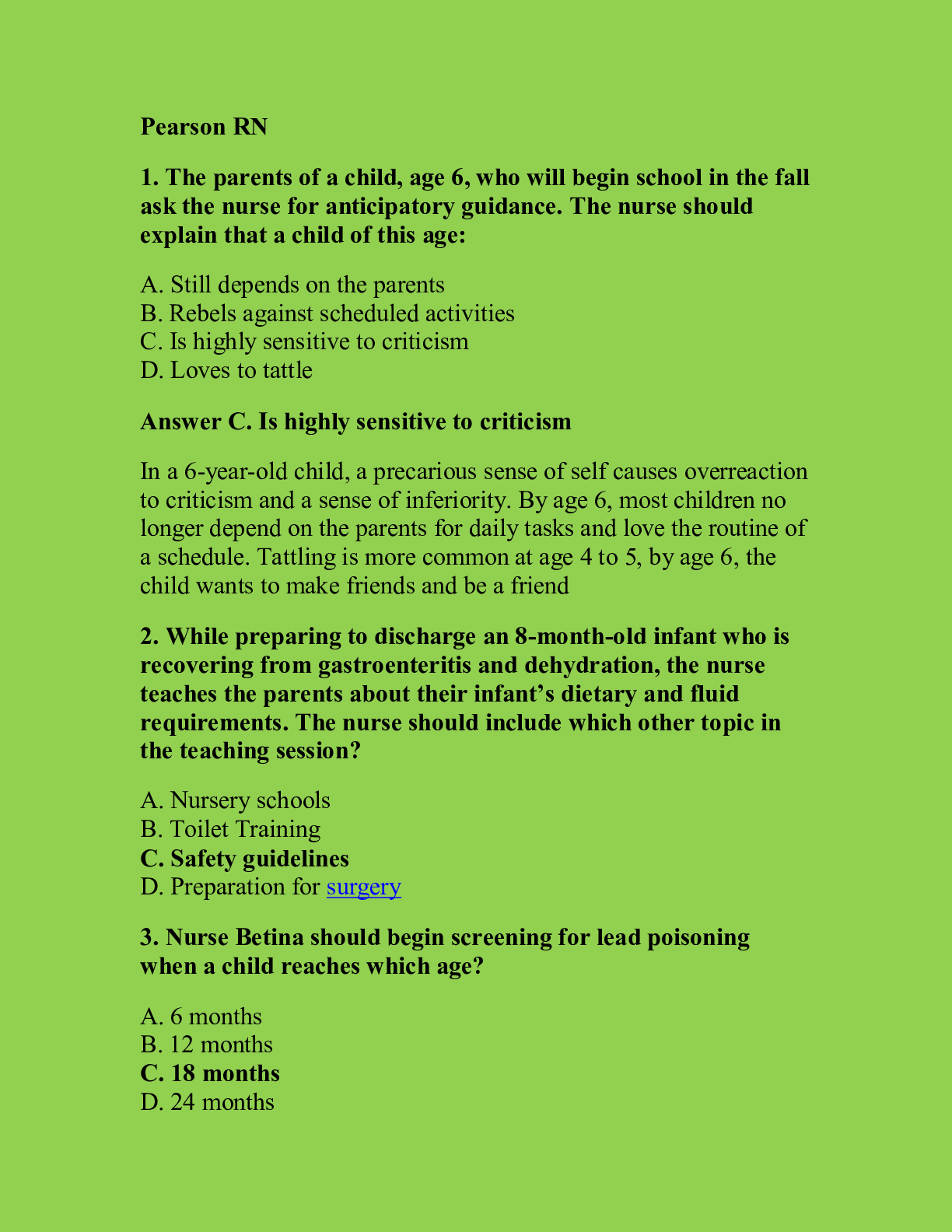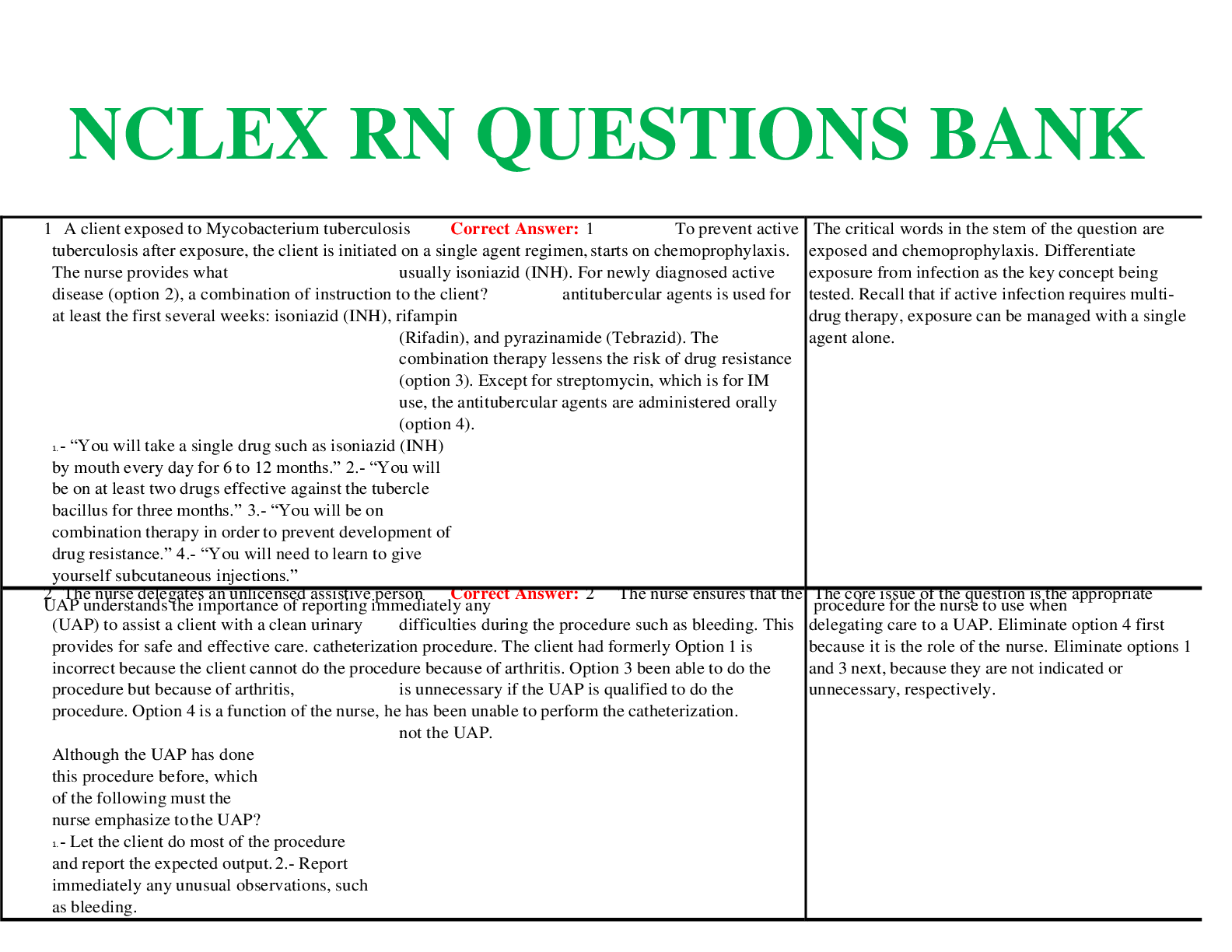Health Care > NCLEX > NCLEX RN Cardiovascular Questions and Answers Revision Guide 100% Correct (All)
NCLEX RN Cardiovascular Questions and Answers Revision Guide 100% Correct
Document Content and Description Below
1. A client admitted to the hospital with chest pain and a history of type 2 diabetes mellitus is scheduled for cardiac catheterization. Which medication would need to be withheld for 24 hours before... the procedure and for 48 hours after the procedure? 1. Glipizide 2. Metformin 3. Repaglinide 4. Regular insulin 2. A client who had cardiac surgery 24 hours ago has had a urine output averaging 20 mL/hour for 2 hours. The client received a single bolus of 500 mL of intravenous fluid. Urine output for the subsequent hour was 25 mL. Daily laboratory results indicate that the blood urea nitrogen level is 45 mg/dL (16 mmol/L) and the serum creatinine level is 2.2 mg/dL (194 mcmol/L). On the basis of these findings, the nurse would anticipate that the client is at risk for which problem? 1. Hypovolemia 2. Acute kidney injury 3. Glomerulonephritis 4. Urinary tract infection 3. The nurse is reviewing an electrocardiogram rhythm strip. The P waves and QRS complexes are regular. The PR interval is 0.16 seconds, and QRS complexes measure 0.06 seconds. The overall heart rate is 64 beats/minute. Which action should the nurse take? 1. Check vital signs. 2. Check laboratory test results. 3. Notify the health care provider. 4. Continue to monitor for any rhythm change. 4. A client is wearing a continuous cardiac monitor, which begins to sound its alarm. The nurse sees no electrocardiographic complexes on the screen. Which is the priority nursing action? 1. Call a code. 2. Call the health care provider. 3. Check the client's status and lead placement. 4. Press the recorder button on the electrocardiogram console. 5. The nurse is evaluating a client's response to cardioversion. Which assessment would be the priority? 1. Blood pressure 2. Status of airway 3. Oxygen flow rate 4. Level of consciousness 6. The nurse is caring for a client who has just had implantation of an automatic internal cardioverter-defibrillator. The nurse should assess which item based on priority? 1. Anxiety level of the client and family 2. Presence of a Medic-Alert card for the client to carry 3. Knowledge of restrictions on post-discharge physical activity 4. Activation status of the device, heart rate cutoff, and number of shocks it is programmed to deliver 7. A client's electrocardiogram strip shows atrial and ventricular rates of 110 beats/minute. The PR interval is 0.14 seconds, the QRS complex measures 0.08 seconds, and the PP and RR intervals are regular. How should the nurse correctly interpret this rhythm? 1. Sinus tachycardia 2. Sinus bradycardia 3. Sinus dysrhythmia 4. Normal sinus rhythm 8. The nurse is assessing the neurovascular status of a client who returned to the surgical nursing unit 4 hours ago after undergoing aortoiliac bypass graft. The affected leg is warm, and the nurse notes redness and edema. The pedal pulse is palpable and unchanged from admission. How should the nurse correctly interpret the client's neurovascular status? 1. The neurovascular status is normal because of increased blood flow through the leg. 2. The neurovascular status is moderately impaired, and the surgeon should be called. 3. The neurovascular status is slightly deteriorating and should be monitored for another hour. 4. The neurovascular status is adequate from an arterial approach, but venous complications are arising. 9. The nurse is evaluating the condition of a client after pericardiocentesis performed to treat cardiac tamponade. Which observation would indicate that the procedure was effective? 1. Muffled heart sounds 2. A rise in blood pressure 3. Jugular venous distention 4. Client expressions of dyspnea 10. A client with variant angina is scheduled to receive an oral calcium channel blocker twice daily. Which statement by the client indicates theneed for further teaching? 1. "I should notify my doctor if my feet or legs start to swell." 2. "My doctor told me to call his office if my pulse rate decreases below 60." 3. "Avoiding grapefruit juice will definitely be a challenge for me, since I usually drink it every morning with breakfast." 4. "My spouse told me that since I have developed this problem, we are going to stop walking in the mall every morning." 11. The nurse is monitoring a client with acute pericarditis for signs of cardiac tamponade. Which assessment finding indicates the presence of this complication? 1. Flat neck veins 2. A pulse rate of 60 beats/minute 3. Muffled or distant heart sounds 4. Wheezing on auscultation of the lungs 12. The home care nurse is providing instructions to a client with an arterial ischemic leg ulcer about home care management and self-care management. Which statement, if made by the client, indicates a need for further instruction? 1. "I need to be sure not to go barefoot around the house." 2. "If I cut my toenails, I need to be sure that I cut them straight across." 3. "It is all right to apply lanolin to my feet, but I shouldn't place it between my toes." 4. "I need to be sure that I elevate my leg above the level of my heart for at least an hour every day." 13. The nurse is providing instructions to a client with a diagnosis of hypertension regarding high-sodium items to be avoided. The nurse instructs the client to avoid consuming which item? 1. Bananas 2. Broccoli 3. Antacids 4. Cantaloupe 14. The nurse is preparing discharge instructions for a client with Raynaud's disease. The nurse should plan to provide which instruction to the client? 1. Use nail polish to protect the nail beds from injury. 2. Wear gloves for all activities involving the use of both hands. 3. Stop smoking because it causes cutaneous blood vessel spasm. 4. Always wear warm clothing, even in warm climates, to prevent vasoconstriction. 15. The nurse is developing a plan of care for a client with varicose veins in whom skin breakdown occurred over the varicosities as a result of secondary infection. Which is a priority intervention? 1. Keep the legs aligned with the heart. 2. Elevate the legs higher than the heart. 3. Clean the skin with alcohol every hour. 4. Position the client onto the side during every shift. Rationale: In the client with a venous disorder, the legs are elevated above the level of the heart to assist with the return of venous blood to the heart. Alcohol is very irritating and drying to tissues and should not be used in areas of skin breakdown. Option 4 specifies infrequent care intervals, so it is not the priority intervention. 16. The nurse in the medical unit is reviewing the laboratory test results for a client who has been transferred from the intensive care unit (ICU). The nurse notes that a cardiac troponin T assay was performed while the client was in the ICU. The nurse determines that this test was performed to assist in diagnosing which condition? 1. Heart failure 2. Atrial fibrillation 3. Myocardial infarction 4. Ventricular tachycardia 17. The nurse is caring for a client with cardiac disease who has been placed on a cardiac monitor. The nurse notes that the client has developed atrial fibrillation and has a rapid ventricular rate of 150 beats/minute. The nurse should next assess the client for which finding? 1. Hypotension 2. Flat neck veins 3. Complaints of nausea 4. Complaints of headache Rationale: The client with uncontrolled atrial fibrillation with a ventricular rate greater than 100 beats/minute is at risk for low cardiac output because of loss of atrial kick. The nurse assesses the client for palpitations, chest pain or discomfort, hypotension, pulse deficit, fatigue, weakness, dizziness, syncope, shortness of breath, and distended neck veins. 18. The nurse is performing an assessment on a client with a diagnosis of left-sided heart failure. Which assessment component would elicit specific information regarding the client's left-sided heart function? 1. Listening to lung sounds 2. Palpating for organomegaly 3. Assessing for jugular vein distention 4. Assessing for peripheral and sacral edema 19. The nurse is participating in a class on rhythm strip interpretation. Which statement by the nurse indicates an understanding of a PR interval of 0.20? 1. "This is a normal finding." 2. "This is indicative of atrial flutter." 3. "This is indicative of atrial fibrillation." 4. "This is indicative of impending reinfarction." 20. The nurse in the medical unit is assigned to provide discharge teaching to a client with a diagnosis of angina pectoris. The nurse is discussing lifestyle changes that are needed to minimize the effects of the disease process. The client continually changes the subject during the teaching session. The nurse interprets that this client's behavior is most likely related to which problem? 1. Anxiety related to the need to make lifestyle changes 2. Boredom resulting from having already learned the material 3. An attempt to ignore or deny the need to make lifestyle changes 4. Lack of understanding of the material provided at the teaching session and [Show More]
Last updated: 1 year ago
Preview 1 out of 38 pages
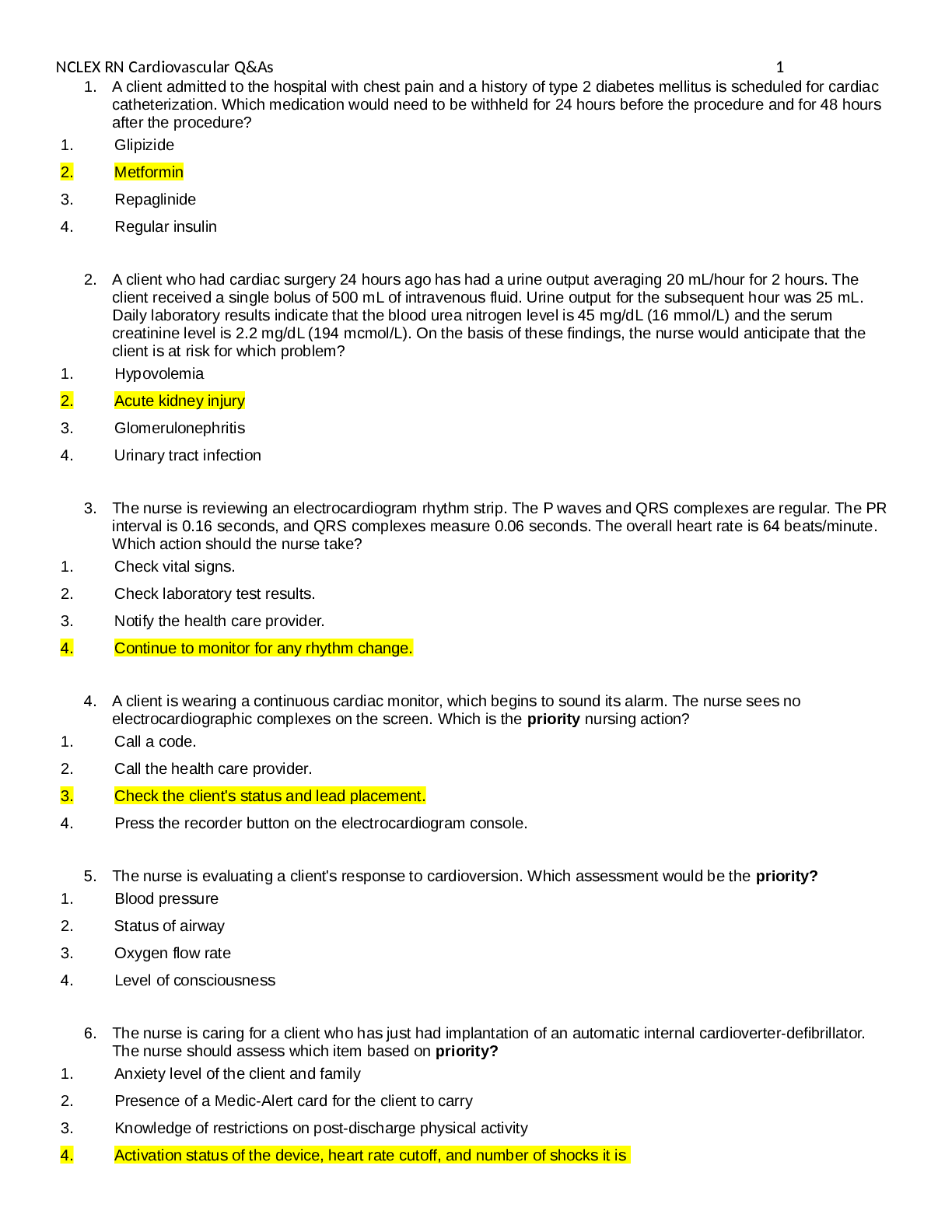
Reviews( 0 )
Document information
Connected school, study & course
About the document
Uploaded On
Jun 18, 2022
Number of pages
38
Written in
Additional information
This document has been written for:
Uploaded
Jun 18, 2022
Downloads
0
Views
43

